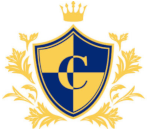In Norway, the education system is made up of primary school (Barneskole), lower secondary school (Ungdomsskole) and upper secondary school (Videregående skole).
Everyone between the ages of 6 – 16 must attend school in Norway. All public education is free in Norway, and classes are taught in Norwegian (with the exception of foreign language classes, of course).
The Norwegian primary and lower secondary education system was reformed in 1997 and a new curriculum was implemented. The different municipalities in Norway are responsible for the running and administration of their public schools.
The school year runs from August to mid June, and consists of two semesters with a Christmas holiday (from mid December to early January) in the middle.
Barneskole (primary school)
Children begin Norwegian primary school at the age of 6 and then leave at the age of 13. It covers the 1st to the 7th grade. In the first grade, pupils spend their days playing educational games, learning social skills and basic education (e.g. learning the alphabet, basic addition and subtraction and basic English).
From the 2nd to the 7th grade, children are taught a wide range of subjects from maths to gymnastics and English to social studies. Children do not receive official grades during primary school, however teachers often write comments and unofficial grades on tests to show progress.
Ungdomsskole (lower secondary school)
Norwegian lower secondary school begins at the age of 12 or 13 and lasts for three years. It covers the 8th to the 10th grade. During lower secondary, pupils are graded and need to maintain good grades in order to attend their upper secondary school of choice. When pupils are in the 8th grade, they have to pick an elective (valgfag), which is typically a foreign language (e.g. German, French or Spanish) or additional English or Norwegian studies.
Videregående skole (upper secondary school)
Norwegian upper secondary school consists of three more years of “optional” schooling. However, Norwegian legislation and the job market (there are almost no jobs available for young adults who leave school after lower secondary) mean that upper secondary is practically unavoidable.
Upper secondary schools in Norway are separated from lower secondary schools. This means that all pupils must re-enrol and begin at a new school whenever they start upper secondary.
All upper secondary education in Norway is predominantly based in public schools, and up until 2005 Norwegian law practically made private schools illegal unless they provided some form of “religious or pedagogic” education. This trend has continued, and in 2007, 93% of all upper secondary school pupils attended a public school.
In 2006, a reform was introduced called the Kunnskapsløftet. The reform allows pupils to follow either a general studies (studiespesialisering) path or a vocational studies (yrkesfag) path in upper secondary school. Within these options, pupils have a choice of many other sub-paths, depending on subjects they'd like to specialise in. The reform also made IT a compulsory subject, and in many municipalities in Norway, IT students will get a free laptop.
International and specialist schools
Private schools in Norway were practically illegal up until 2005, at which point they became more popular with expatriates.
Today, you will find several international schools in Norway, and also specialised schools that teach in a particular fashion. Most international schools offer a completely English curriculum and they teach either the International Baccalaureate or the British GCSE and GCE systems.


